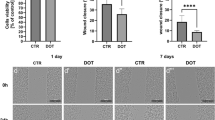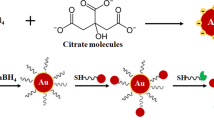Abstract
Ultrasound contrast agents (UCAs) have tremendous potential for in vivo molecular imaging because of their high sensitivity. However, the diagnostic potential of UCAs has been difficult to exploit because current UCAs are based on pre-formed microbubbles, which can only detect cell surface receptors. Here, we demonstrate that chemical reactions that generate gas forming molecules can be used to perform molecular imaging by ultrasound in vivo. This new approach was demonstrated by imaging reactive oxygen species in vivo with allylhydrazine, a liquid compound that is converted into nitrogen and propylene gas after reacting with radical oxidants. We demonstrate that allylhydrazine encapsulated within liposomes can detect a 10 micromolar concentration of radical oxidants by ultrasound, and can image oxidative stress in mice, induced by lipopolysaccharide, using a clinical ultrasound system. We anticipate numerous applications of chemically-generated microbubbles for molecular imaging by ultrasound, given ultrasound’s ability to detect small increments above the gas saturation limit, its spatial resolution and widespread clinical use.




Similar content being viewed by others
References
Apfel, R. E., and C. K. Holland. Gauging the likelihood of cavitation from short-pulse, low-duty cycle diagnostic ultrasound. Ultrasound Med. Biol. 17(2):179–185, 1991.
Barnham, K. J., C. L. Masters, and A. I. Bush. Neurodegenerative diseases and oxidative stress. Nat. Rev. Drug Discov. 3(3):205–214, 2004.
Bird, R. B., W. E. Stewart, and E. N. Lightfoot. Transport Phenomena. New York: John Wiley, 2002.
Blander, M., and J. L. Katz. Bubble nucleation in liquids. AIChE J. 21(5):833–848, 1975.
Borden, M. A., and M. L. Longo. Dissolution behavior of lipid monolayer-coated, air-filled microbubbles: effect of lipid hydrophobic chain length. Langmuir 18(24):9225–9233, 2002.
Bowers, P. G., K. Bar-Eli, and R. M. Noyes. Chemical oscillations and instabilities .100. Unstable supersaturated solutions of gases in liquids and nucleation theory. Transactions 92(16):2843–2849, 1996.
Cable, M., and J. R. Frade. The influence of surface-tension on the diffusion-controlled growth or dissolution of spherical gas-bubbles. Proceedings of the Royal Society of London Series A-Mathematical Physical and Engineering Sciences 420(1859):247–265, 1988.
Cadenas, E., and K. J. A. Davies. Mitochondrial free radical generation, oxidative stress, and aging. Free Radical Biol. Med. 29(3–4):222–230, 2000.
Calderwood, T. S., C. L. Johlman, J. L. Roberts, C. L. Wilkins, and D. T. Sawyer. Oxidation of substituted hydrazines by superoxide ion—the initiation step for the autoxidation of 1,2-diphenylhydrazine. J. Am. Chem. Soc. 106(17):4683–4687, 1984.
Chen, W. T., C. H. Tung, and R. Weissleder. Imaging reactive oxygen species in arthritis. Mol. Imaging 3(3):159–162, 2004.
Chomas, J. E., P. Dayton, J. Allen, K. Morgan, and K. W. Ferrara. Mechanisms of contrast agent destruction. IEEE Trans. Ultrason. Ferroelectr. Freq. Control 48(1):232–248, 2001.
Christiansen, J. P., H. Leong-Poi, A. L. Klibanov, S. Kaul, and J. R. Lindner. Noninvasive imaging of myocardial reperfusion injury using leukocyte-targeted contrast echocardiography. Circulation 105(15):1764–1767, 2002.
Church, C. C. Spontaneous homogeneous nucleation, inertial cavitation and the safety of diagnostic ultrasound. Ultrasound Med. Biol. 28(10):1349–1364, 2002.
Corey, E. J., G. Wess, Y. B. Xiang, and A. K. Singh. Stereospecific total synthesis of (+/−)-cafestol. J. Am. Chem. Soc. 109(15):4717–4718, 1987.
Dayton, P. A., J. E. Chomas, A. F. H. Lum, J. S. Allen, J. R. Lindner, S. I. Simon, et al. Optical and acoustical dynamics of microbubble contrast agents inside neutrophils. Biophys. J. 80(3):1547–1556, 2001.
Dayton, P. A., K. E. Morgan, A. L. Klibanov, G. H. Brandenburger, and K. W. Ferrara. Optical and acoustical observations of the effects of ultrasound on contrast agents. IEEE Trans. Ultrason. Ferroelectr. Freq. Control 46(1):220–232, 1999.
Ferrell, R. T., and D. M. Himmelbl. Diffusion coefficients of nitrogen and oxygen in water. J. Chem. Eng. Data 12(1):111, 1967.
Finkel, T., and N. J. Holbrook. Oxidants, oxidative stress and the biology of ageing. Nature 408(6809):239–247, 2000.
Finkelstein, Y., and A. Tamir. Formation of gas-bubbles in supersaturated solutions of gases in water. AIChE J. 31(9):1409–1419, 1985.
Forstermann, U. Oxidative stress in vascular disease: causes, defense mechanisms and potential therapies. Nat. Clin. Pract. Cardiovasc. Med. 5(6):338–349, 2008.
Gomes, A., E. Fernandes, and J. L. F. C. Lima. Fluorescence probes used for detection of reactive oxygen species. J. Biochem. Biophys. Methods 65(2–3):45–80, 2005.
Huang, S. L., and R. C. MacDonald. Acoustically active liposomes for drug encapsulation and ultrasound-triggered release. Biochim. Biophys. Acta Biomembr. 1665(1–2):134–141, 2004.
Jabbari, A., E. J. Sorensen, and K. N. Houk. Transition states of the retro-ene reactions of allylic diazenes. Org. Lett. 8(14):3105–3107, 2006.
Jones, S. F., G. M. Evans, and K. P. Galvin. Bubble nucleation from gas cavities—a review. Adv. Colloid Interface 80(1):27–50, 1999.
Kakade, M. L., and I. E. Liener. Determination of available lysine in proteins. Anal. Biochem. 27(2):273–280, 1969.
Lanza, G. M., and S. A. Wickline. Targeted ultrasonic contrast agents for molecular imaging and therapy. Prog. Cardiovasc. Dis. 44(1):13–31, 2001.
Lasic, D. D. The mechanism of vesicle formation. Biochem. J. 256(1):1–11, 1988.
Lee, D., S. Khaja, J. C. Velasquez-Castano, M. Dasari, C. Sun, J. Petros, W. R. Taylor, and N. Murthy. In vivo imaging of hydrogen peroxide with chemiluminescent nanoparticles. Nat. Mater. 6(10):765–769, 2007.
Lee, J. C., H. Bermudez, B. M. Discher, M. A. Sheehan, Y. Y. Won, F. S. Bates, and D. E. Discher. Preparation, stability, and in vitro performance of vesicles made with diblock copolymers. Biotechnol. Bioeng. 73(2):135–145, 2001.
Lindner, J. R., J. Song, F. Xu, A. L. Klibanov, K. Singbartl, K. Ley, and S. Kaul. Noninvasive ultrasound imaging of inflammation using microbubbles targeted to activated leukocytes. Circulation 102(22):2745–2750, 2000.
Lubetkin, S. D. Why is it much easier to nucleate gas bubbles than theory predicts? Langmuir 19(7):2575–2587, 2003.
Price, J. D., and R. P. Johnson. Thermal rearrangements of cyclic allenes via retro-ene reactions. Tetrahedron Lett. 26(21):2499–2502, 1985.
Re, R., N. Pellegrini, A. Proteggente, A. Pannala, M. Yang, and C. Rice-Evans. Antioxidant activity applying an improved ABTS radical cation decolorization assay. Free Radical Biol. Med. 26(9–10):1231–1237, 1999.
Rubin, M. B., and R. M. Noyes. Chemical oscillations and instabilities .77. Measurements of critical supersaturation for homogeneous nucleation of bubbles. J. Phys. Chem. 91(15):4193–4198, 1987.
Ryan, P. J., and D. L. Melchior. Liposomes containing gas for ultrasound detection. USPTO #4900540, USA, 1990.
Sashidhar, R. B., A. K. Capoor, and D. Ramana. Quantitation of epsilon-amino group using amino-acids as reference-standards by trinitrobenzene sulfonic-acid—a simple spectrophotometric method for the estimation of hapten to carrier protein ratio. J. Immunol. Methods 167(1–2):121–127, 1994.
Toth, B., and D. Nagel. Tumor induction study with allylhydrazine HCl in swiss mice. Br. J. Cancer 34(1):90–93, 1976.
Unger, E. Liposomes as contrast agents for ultrasonic imaging and method for preparing the same. 5123414. USPTO, USA, 1992.
Weller, G. E. R., M. K. K. Wong, R. A. Modzelewski, E. X. Lu, A. L. Klibanov, W. R. Wagner, and F. S. Villanueva. Ultrasonic imaging of tumor angiogenesis using contrast microbubbles targeted via the tumor-binding peptide arginine-arginine-leucine. Cancer Res. 65(2):533–539, 2005.
Zalipsky, S., N. Mullah, C. Engbers, M. U. Hutchins, and R. Kiwan. Thiolytically cleavable dithiobenzyl urethane-linked polymer-protein conjugates as macromolecular prodrugs: reversible PEGylation of proteins. Bioconjugate Chem. 18(6):1869–1878, 2007.
Zheng, Q., D. J. Durben, G. H. Wolf, and C. A. Angell. Liquid at large negative pressures—water at the homogenous nucleation limit. Science 254(5033):829–832, 1991.
Acknowledgments
This work was supported by NIH UO1 HL80711-01, (N.M.), NSF-BES-0546962 (N.M.), NIH U01 268201000043C-0-0-1 (N.M.) and NIH RO1, HL096796-01 (N.M.), NIHR01CA112356 (K.F.) and NIHCA103828 (K.F.). The authors would like to thank Dr. Lihong Cheng for assisting the setup for the clinical ultrasound system.
Author information
Authors and Affiliations
Corresponding author
Additional information
Associate Editor James Tunnell oversaw the review of this article.
Rights and permissions
About this article
Cite this article
Perng, J.K., Lee, S., Kundu, K. et al. Ultrasound Imaging of Oxidative Stress In Vivo with Chemically-Generated Gas Microbubbles. Ann Biomed Eng 40, 2059–2068 (2012). https://doi.org/10.1007/s10439-012-0573-9
Received:
Accepted:
Published:
Issue Date:
DOI: https://doi.org/10.1007/s10439-012-0573-9




